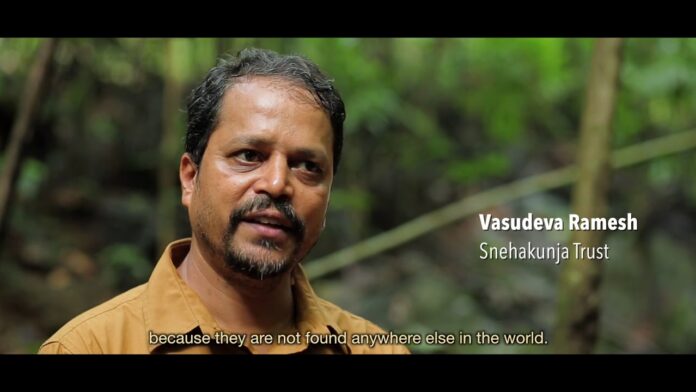Climate change is a pressing issue that has been at the forefront of global discussions for decades. As the Earth’s temperature continues to rise, we are witnessing the devastating impacts of extreme weather events, sea level rise, and loss of biodiversity. In order to mitigate these effects and build resilience against future changes, it is crucial for countries and communities to implement climate adaptation strategies.
In this blog post, we will explore the concept of climate adaptation and its importance in today’s world. We will also discuss the different types of climate adaptation strategies, provide case studies of successful implementation, and address the challenges in implementing these strategies. Finally, we will look towards the future and discuss how climate adaptation can play a role in creating a more sustainable and resilient world.
Importance of Climate Adaptation
Climate adaptation refers to the actions taken to prepare for and respond to the impacts of climate change. These impacts can range from increased frequency and intensity of natural disasters to shifts in agricultural patterns and changes in water availability. The goal of climate adaptation is to reduce the vulnerability of communities and ecosystems to these changes and increase their resilience.
One of the main reasons why climate adaptation is so important is because it allows us to better cope with the current and future impacts of climate change. By taking proactive measures, we can reduce the risks and costs associated with extreme weather events, such as hurricanes, floods, and droughts. It also helps protect critical infrastructure, such as homes, roads, and power grids, which are vulnerable to climate change impacts.
Furthermore, climate adaptation is essential for protecting human health and well-being. As temperatures continue to rise, we can expect to see an increase in heat-related illnesses and deaths. By adapting our cities and buildings to be more heat-resilient, we can protect vulnerable populations and ensure a safer living environment for all.
In addition, climate adaptation can also have economic benefits. For example, investing in green infrastructure, such as green roofs and permeable pavements, can help mitigate the impacts of heavy rainfall and reduce the strain on traditional stormwater management systems. This not only helps protect communities from flooding but also saves money in the long run by reducing maintenance and repair costs.
Types of Climate Adaptation Strategies

There are various types of climate adaptation strategies that can be implemented at different levels, from individual households to national policies. These strategies can be categorized into three main types: structural, ecological, and social.
Structural Adaptation Strategies

Structural adaptation strategies involve physical changes to the built environment in order to make it more resilient to the impacts of climate change. These strategies include measures such as raising buildings above flood levels, constructing sea walls to protect against storm surges, and installing stronger roofs to withstand high winds.
One example of a successful structural adaptation strategy is the Netherlands’ Delta Works project. In the 1950s, the Netherlands experienced devastating floods that caused widespread damage and loss of life. As a response, the government implemented the Delta Works, a system of dams, dikes, and barriers along the country’s coastline to protect against future floods. This project has been highly effective in protecting the low-lying country from rising sea levels and storm surges.
Structural adaptation strategies can be costly and require significant planning and engineering expertise. However, they are crucial for protecting critical infrastructure and ensuring the safety of communities in areas prone to extreme weather events.
Ecological Adaptation Strategies
Ecological adaptation strategies involve working with nature to build resilience against climate change impacts. These strategies incorporate natural systems and processes to provide protection against hazards. For example, restoring wetlands and mangroves can help buffer coastlines against storm surges and sea level rise.
One successful case of ecological adaptation is the restoration of the Louisiana wetlands in the United States. The wetlands act as a natural barrier against hurricanes, protecting nearby communities from storm surge. However, due to human activities such as dredging and oil and gas development, these wetlands have been disappearing at an alarming rate. Through restoration efforts, the state is working to build resilience against future storm events and protect the vulnerable coastal communities.
Ecological adaptation strategies not only provide protection against climate change impacts but also bring a host of other benefits. By restoring natural systems, we can improve water quality, provide habitat for wildlife, and enhance recreational opportunities for communities.
Social Adaptation Strategies
Social adaptation strategies involve changes in behavior or societal practices to reduce vulnerability and increase resilience to climate change. These strategies can include actions such as improving early warning systems for extreme weather events, promoting sustainable agriculture practices, and educating communities on how to respond to disasters.
One successful example of social adaptation is the establishment of community-based disaster risk reduction programs in Bangladesh. This densely populated country is highly vulnerable to cyclones, floods, and droughts. Through these programs, communities are provided with necessary skills and knowledge to prepare for and respond to disasters, reducing their vulnerability and increasing their resilience.
Social adaptation strategies are essential for building resilience at the community level, as they empower individuals and households to take action and protect themselves from the impacts of climate change.
Case Studies of Successful Climate Adaptation
There are many successful examples of climate adaptation strategies being implemented around the world. These case studies demonstrate the effectiveness of proactive measures in building resilience against the impacts of climate change.
Rotterdam, Netherlands – Water Squares
As sea levels continue to rise, cities along coastlines are facing increased risks of flooding. In response, the city of Rotterdam in the Netherlands has implemented innovative climate adaptation strategies known as “water squares.” These are public spaces designed to collect and store excess rainfall during heavy downpours, preventing the city’s drainage system from becoming overwhelmed.
The first water square was completed in 2013 and has proven to be highly successful in reducing flood risks and improving the city’s overall resilience. The project has also brought multiple co-benefits, such as providing recreational space for residents, improving air quality, and increasing biodiversity.
Mexico City, Mexico – Rainwater Harvesting
Mexico City is facing multiple challenges related to water, including scarcity and flooding. To address these issues, the city has implemented a rainwater harvesting program that collects and stores rainwater from rooftops and paved areas. This water is then used for irrigation, washing, and other non-potable purposes.
Through this program, Mexico City has been able to reduce its dependence on groundwater and decrease the risk of floods during heavy rainfall events. The program has also provided economic benefits by reducing water bills for participating households.
Fiji – Climate-Resilient Agriculture
Agriculture is a critical sector for many countries, and climate change poses a significant threat to food security. In Fiji, small-scale farmers are particularly vulnerable to the impacts of extreme weather events, which can destroy crops and livelihoods.
To build resilience against these impacts, the government of Fiji, with the support of the United Nations Development Programme (UNDP), has implemented a climate-resilient agriculture program. This program includes training farmers on sustainable farming techniques, such as conservation agriculture and crop diversification, as well as providing them with drought-resistant seeds.
The project has helped farmers increase their productivity, reduce crop losses, and improve their income. It has also reduced their reliance on external inputs, making them more self-sufficient and resilient to future changes.
Challenges in Implementing Climate Adaptation Strategies
While there are many successful examples of climate adaptation strategies, there are also various challenges that hinder their implementation.
One of the main challenges is the lack of funding and resources. Many developing countries, which are most vulnerable to the impacts of climate change, often have limited financial resources to invest in adaptation measures. This creates a significant barrier to implementing large-scale projects and can lead to inadequate adaptation measures being taken.
Another challenge is the complexity of climate change impacts and the uncertainty surrounding their future severity and frequency. This makes it challenging to design and implement effective adaptation strategies that can withstand uncertain future conditions.
Additionally, some adaptation strategies may have unintended consequences or trade-offs. For example, building sea walls to protect against storm surges may impede access to beaches and negatively impact local economies dependent on tourism.
Finally, there can be political and social barriers to implementing climate adaptation strategies. These can include resistance from communities or industries affected by proposed changes, conflicting priorities among different stakeholders, and lack of political will to take action.
Future Outlook for Climate Adaptation
The need for climate adaptation strategies will only increase in the coming years as the impacts of climate change continue to intensify. It is essential for governments, businesses, and individuals to work together to build resilience against these changes and ensure a sustainable future for all.
One promising development in this field is the growing recognition of nature-based solutions as a vital component of climate adaptation. These solutions, such as restoring wetlands and forests, not only provide protection against extreme weather events but also bring a host of other benefits, such as carbon sequestration, biodiversity conservation, and improved human health.
In addition, advancements in technology, such as remote sensing and data analytics, are making it easier to monitor and predict climate change impacts, allowing for more targeted and effective adaptation strategies.
Furthermore, international initiatives, such as the Paris Agreement and the Sendai Framework for Disaster Risk Reduction, are providing a framework for countries to collaborate and address the challenges of climate change and disaster risk reduction.
Conclusion
Climate adaptation strategies are crucial for building resilience against the impacts of climate change. By implementing proactive measures, we can reduce the risks and costs associated with extreme weather events and protect vulnerable communities and ecosystems. However, there are also challenges that need to be overcome in order to effectively implement these strategies.
As we look towards the future, it is essential for governments, businesses, and individuals to work together to find innovative and sustainable solutions to adapt to a changing climate. By investing in nature-based solutions, leveraging technology, and collaborating on an international level, we can build a more resilient world for ourselves and future generations. It is time to act now and create a more sustainable and resilient future for all.









